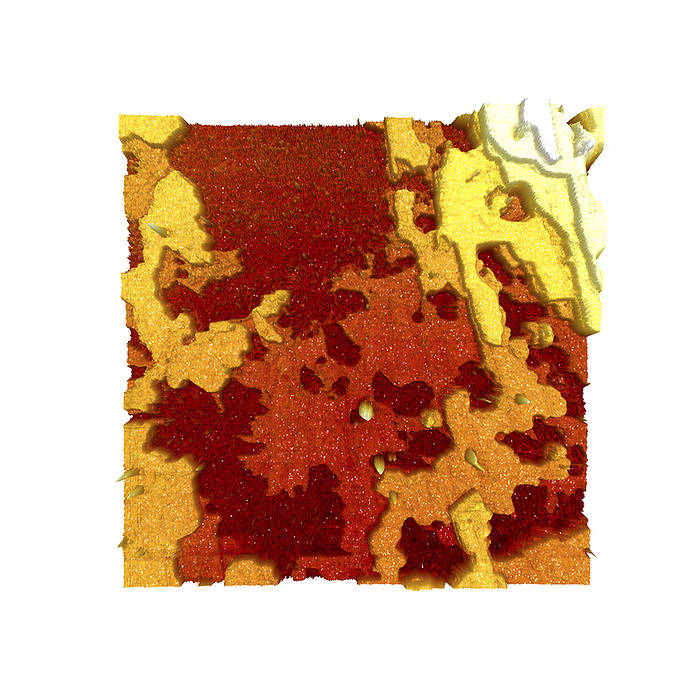
RM
Plasma membrane proteins, AFM
Plasma membrane. Coloured atomic force micrograph (AFM) showing a lipid bilayer plasma membrane and its membrane proteins (spikes). The membrane consists of a dual layer of phospholipids, with the hydrophobic lipid tails in the centre and the hydrophilic phosphate groups on either side. The proteins either span the whole membrane (transmembrane proteins), or sit on its surface (peripheral proteins). The proteins have a number of roles. Transmembrane proteins include channels, which allow ions and molecules to passively pass through them, transporters, which use energy to carry molecules into the cell, and structural proteins. Peripheral proteins include receptors, which allow cellular recognition and enzymes, which trigger cellular biochemical processes.

More
Top Categories
